Geology
Origin of Gemstones
In nature, crystals can form when liquid rock, called magma, cools. 🌋
If it cools slowly, then crystals may form. 🔮
Many valuable crystals such as diamonds, rubies, and emeralds form this way!


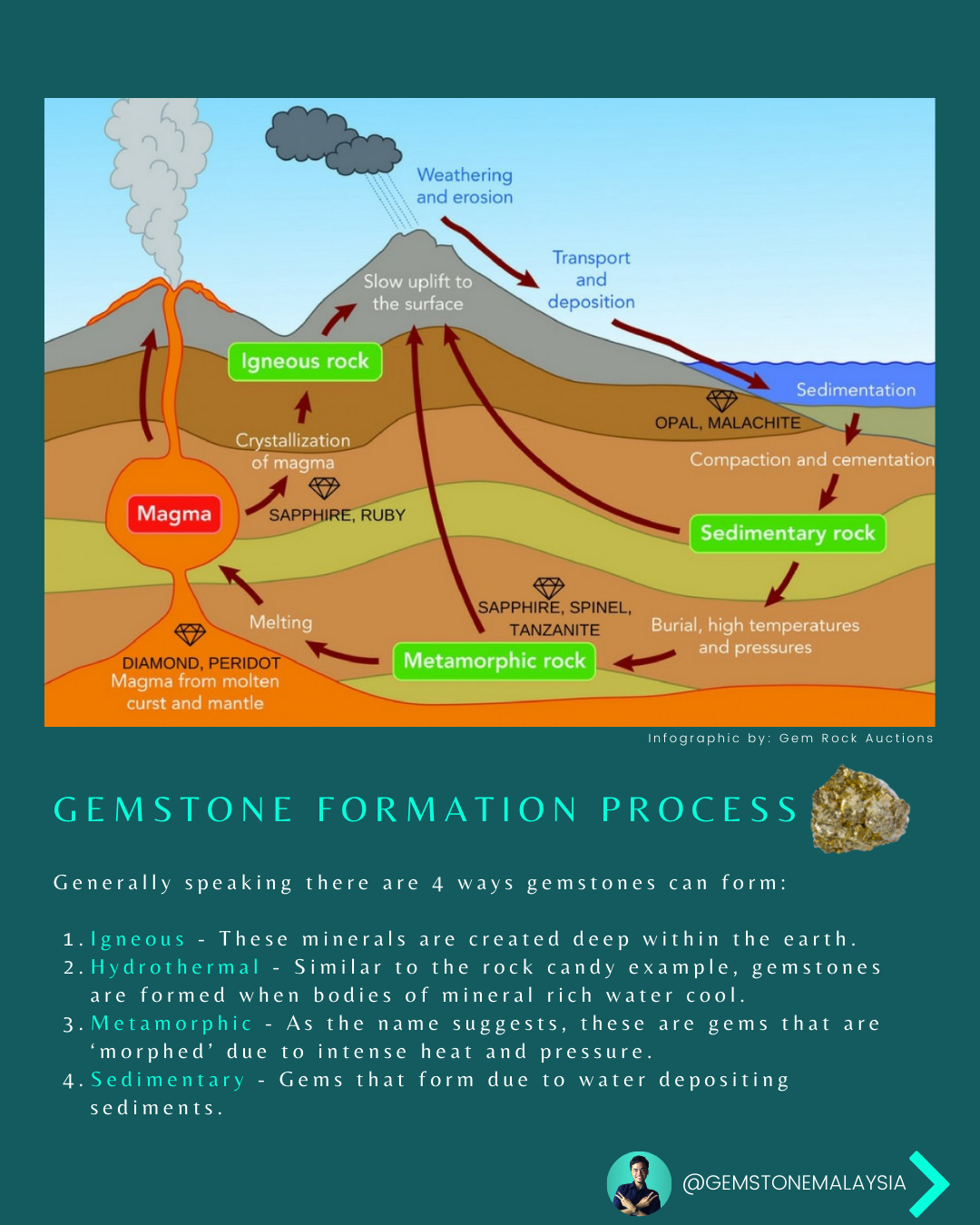
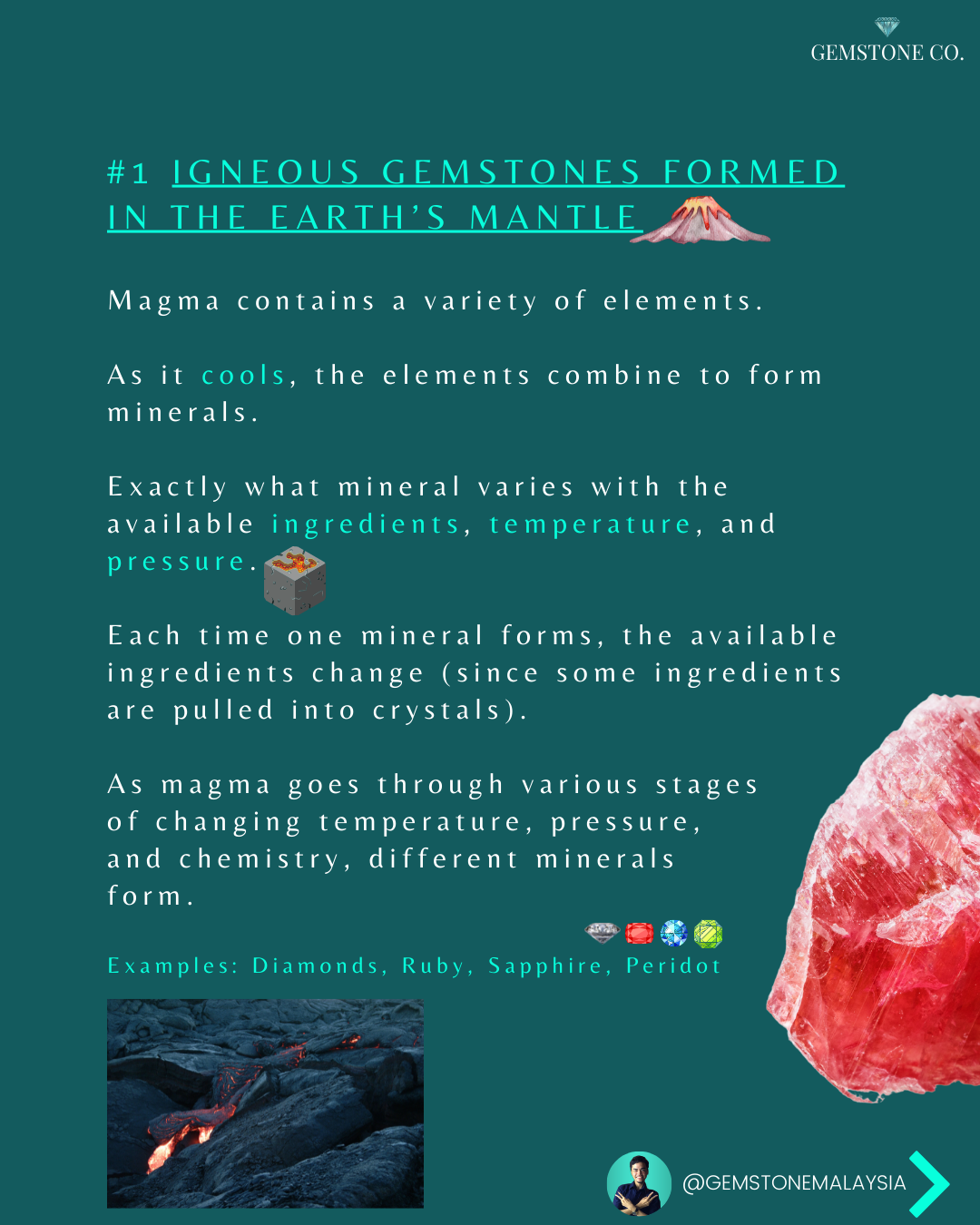
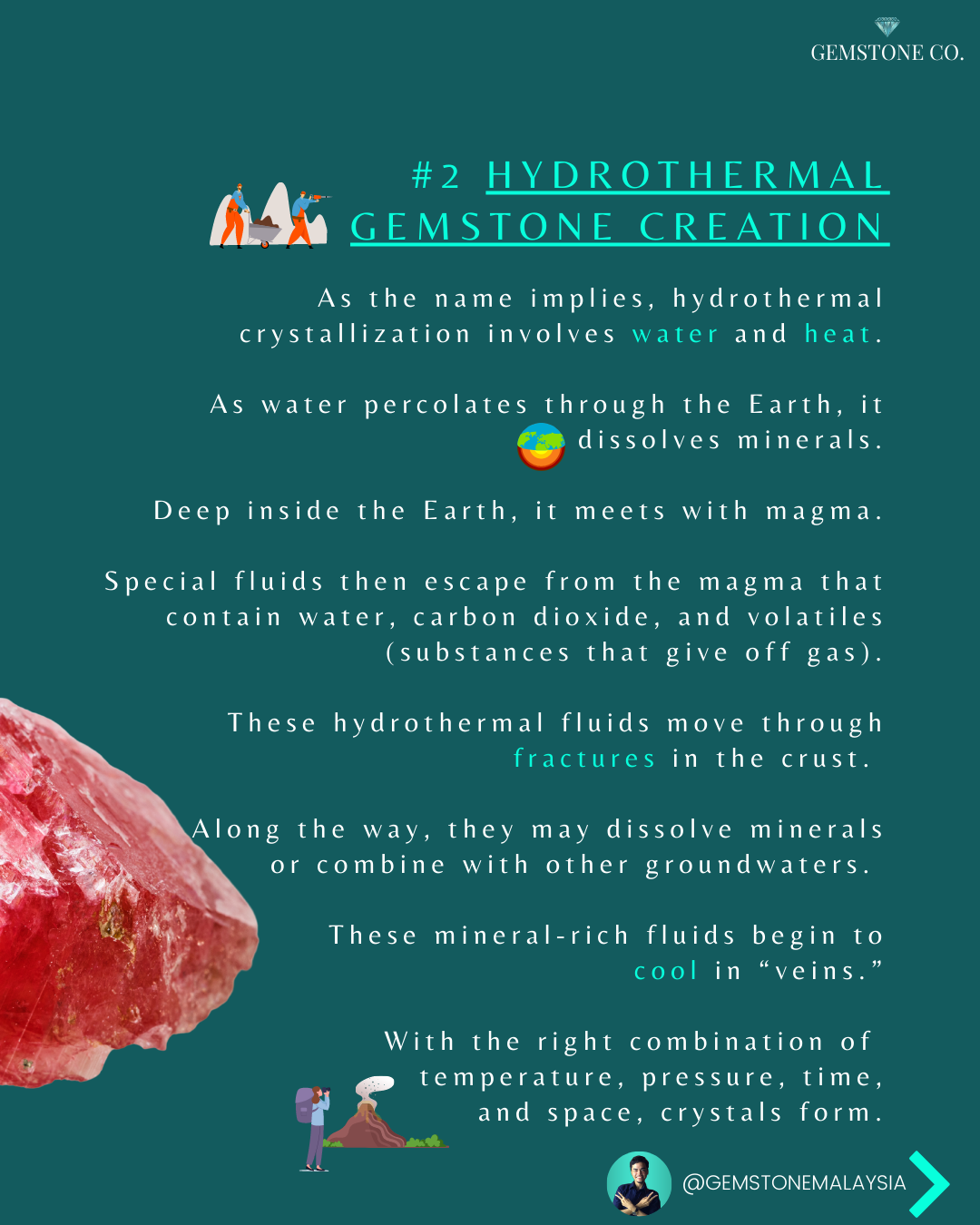
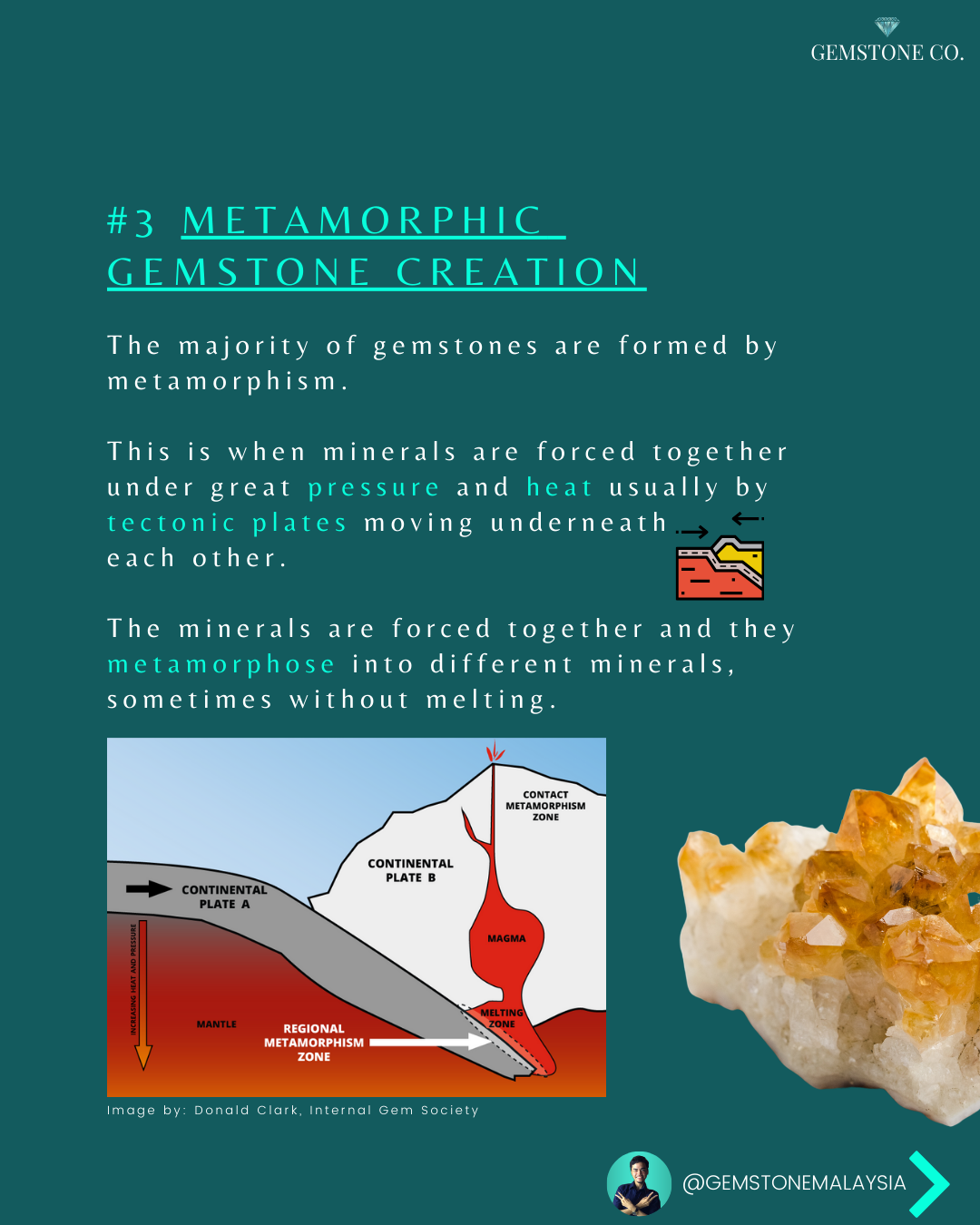
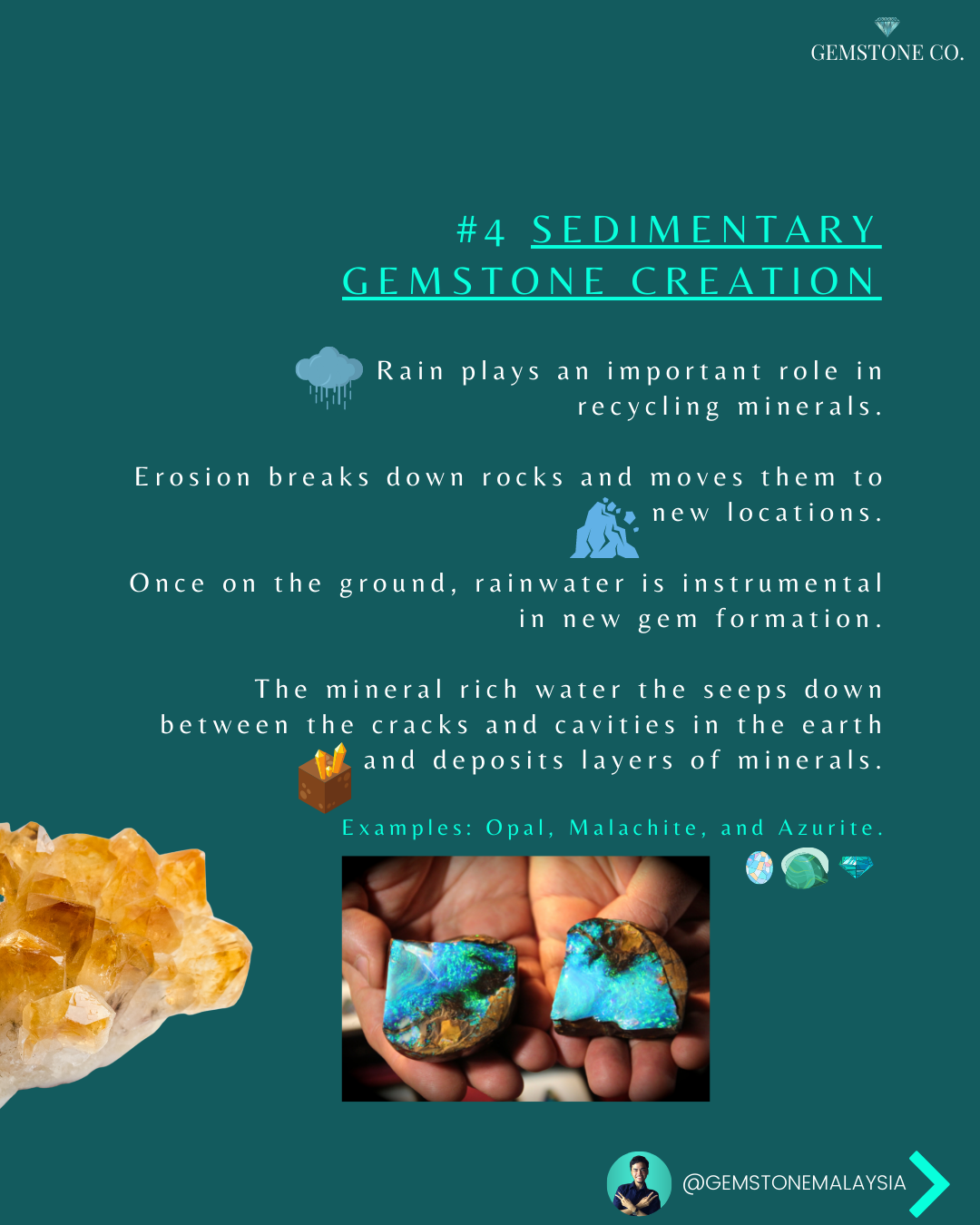
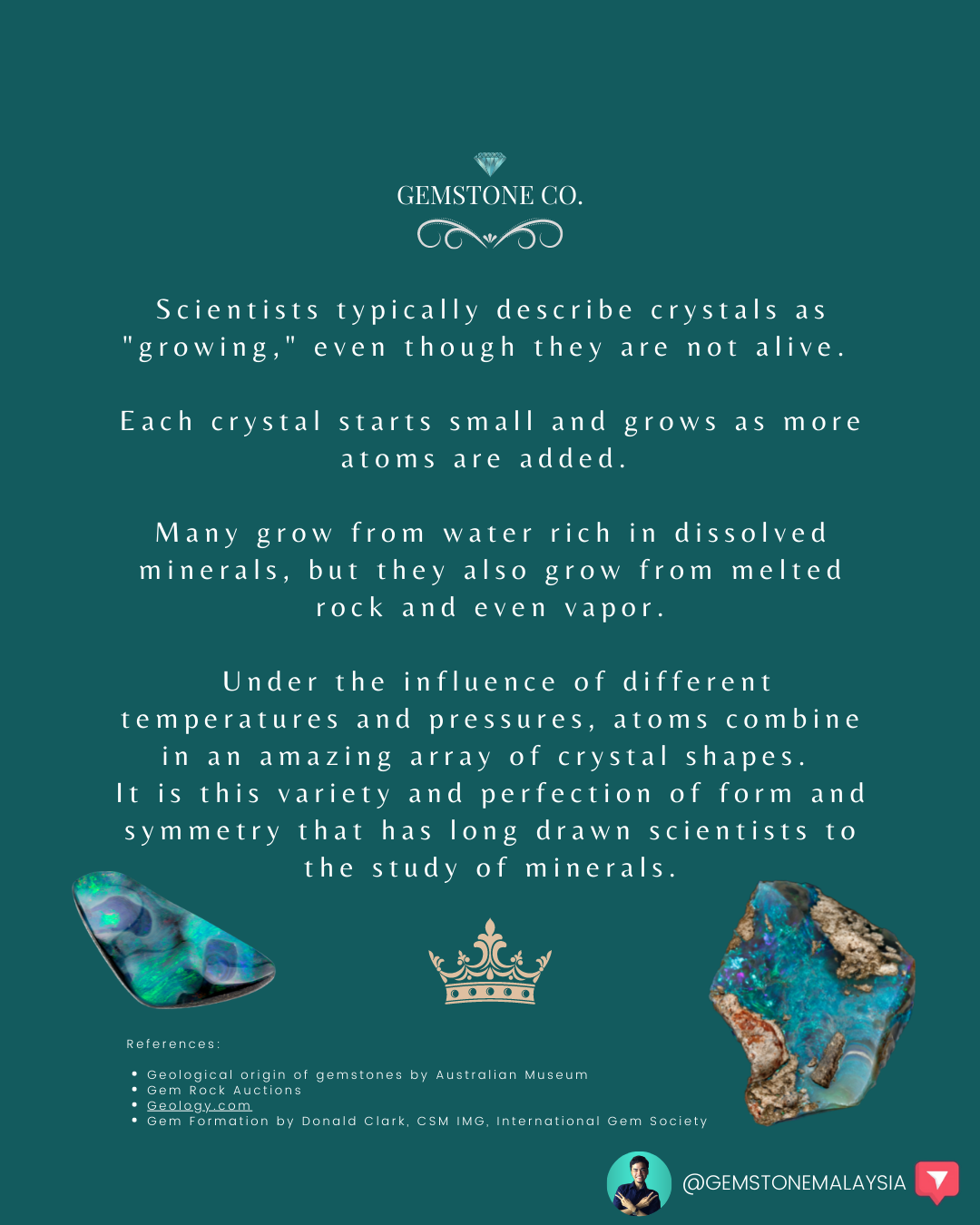
Gem Formation
Most gems form naturally as minerals within the Earth. 🌏
Most form as crystals, solids whose atoms are arranged in highly ordered repeating patterns called crystal systems. ❄️
Learning about the geological processes involved in gem formation will help you understand some of the properties they'll encounter in gemstones. 💎
Check out the four ways how gemstones can form!
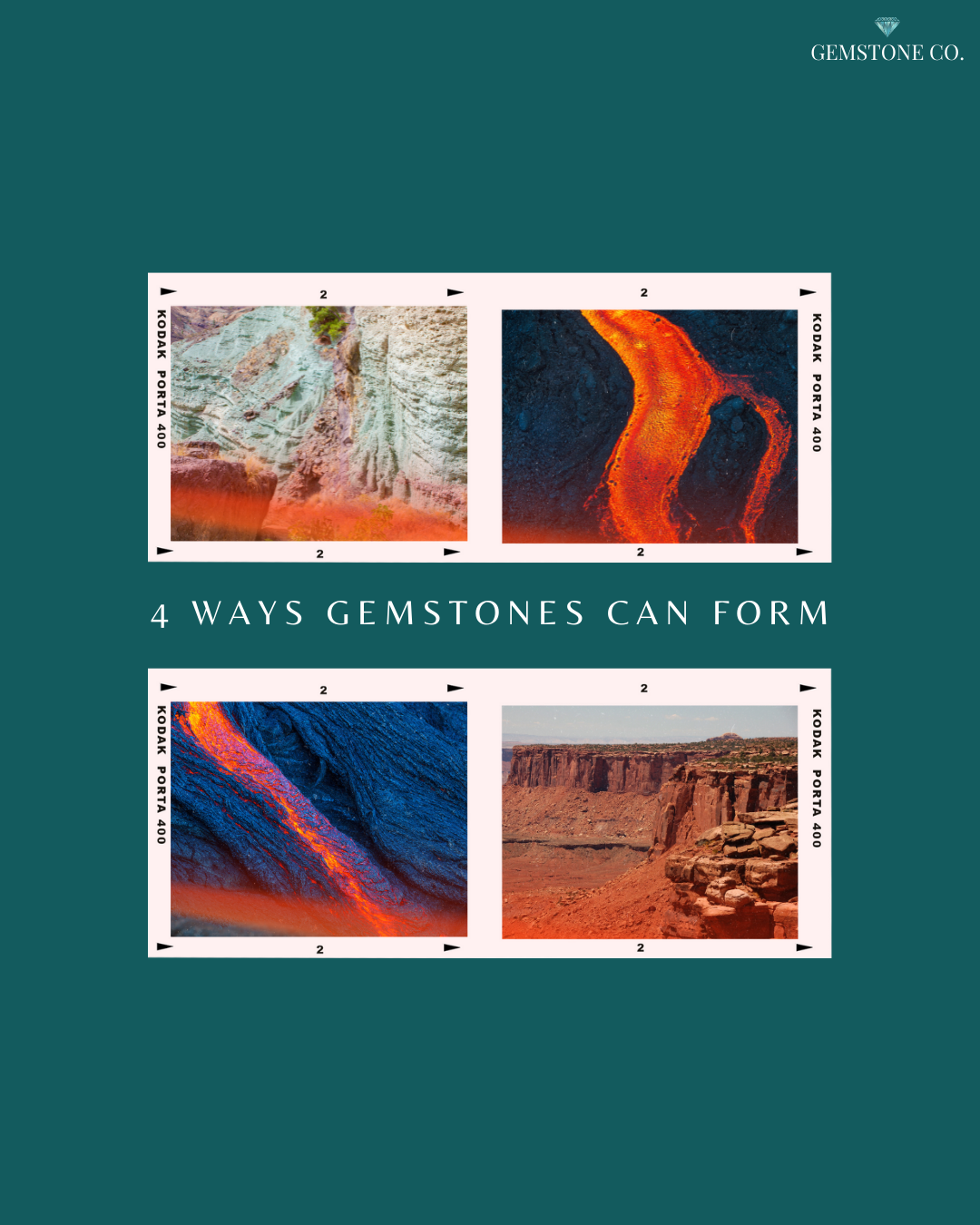
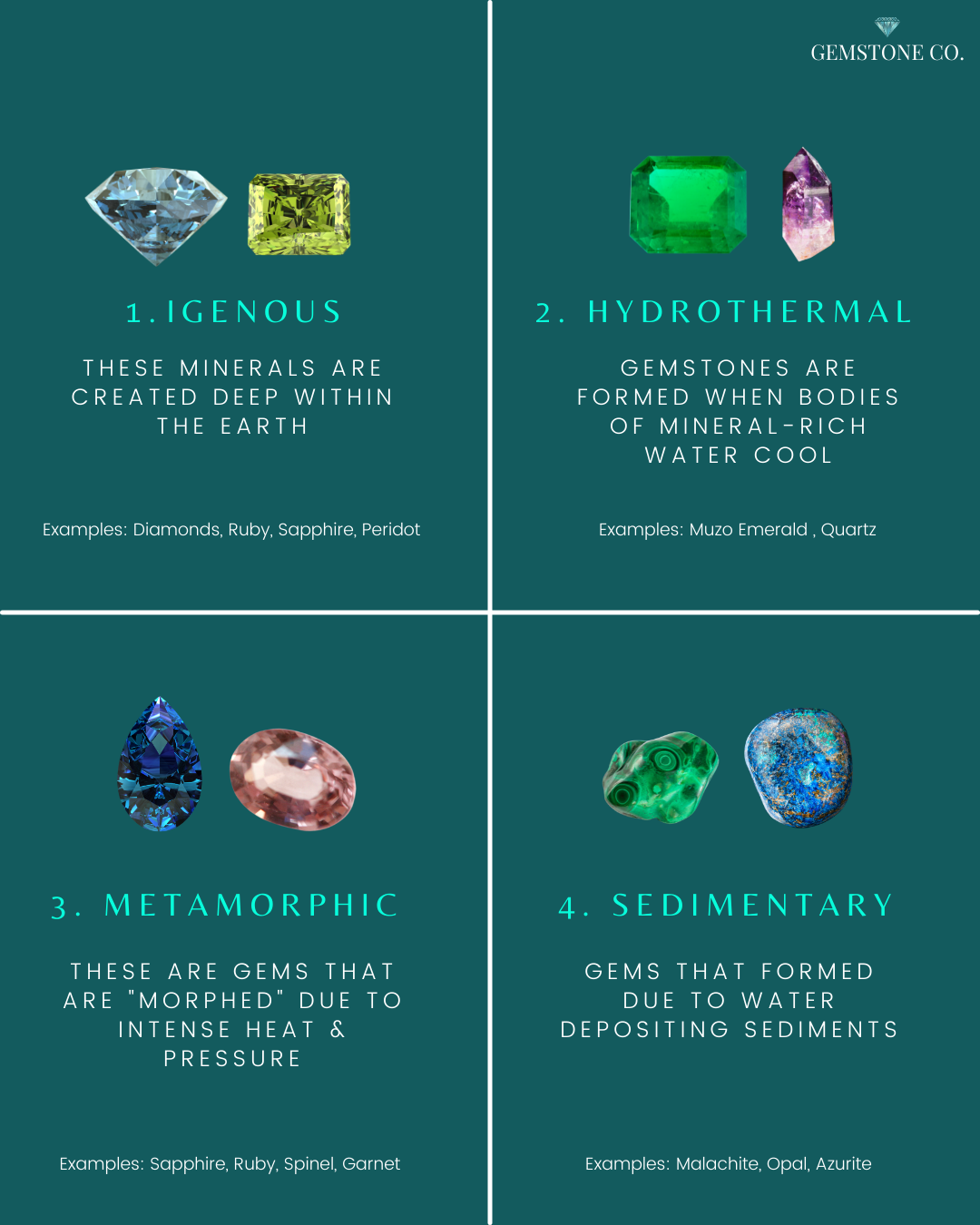
Gemstones are the product of our earth. 🌏
Some gemstones, like diamond & zircon, were formed deep in the earth and brought to the surface by explosions of molten rock. 🌋
Many, like topaz, tourmaline, and aquamarine, crystallized slowly from hot fluids and gases as they cooled and solidified, far below the surface of the earth. 💎❄️🌬️
Others formed from liquids filtered into cracks and pockets in rock, like Australian opal. 💦
Some, like garnet and jade, formed when rocks were heated and pressurized by the earth's movements, and recombined to form new, different minerals! 😁
Sources: (1) Geological origin of gemstones by Australian Museum; (2) Gem Rock Auctions; (3) Geology.com; (4) Gem Formation by Donald Clark, International Gem Society
